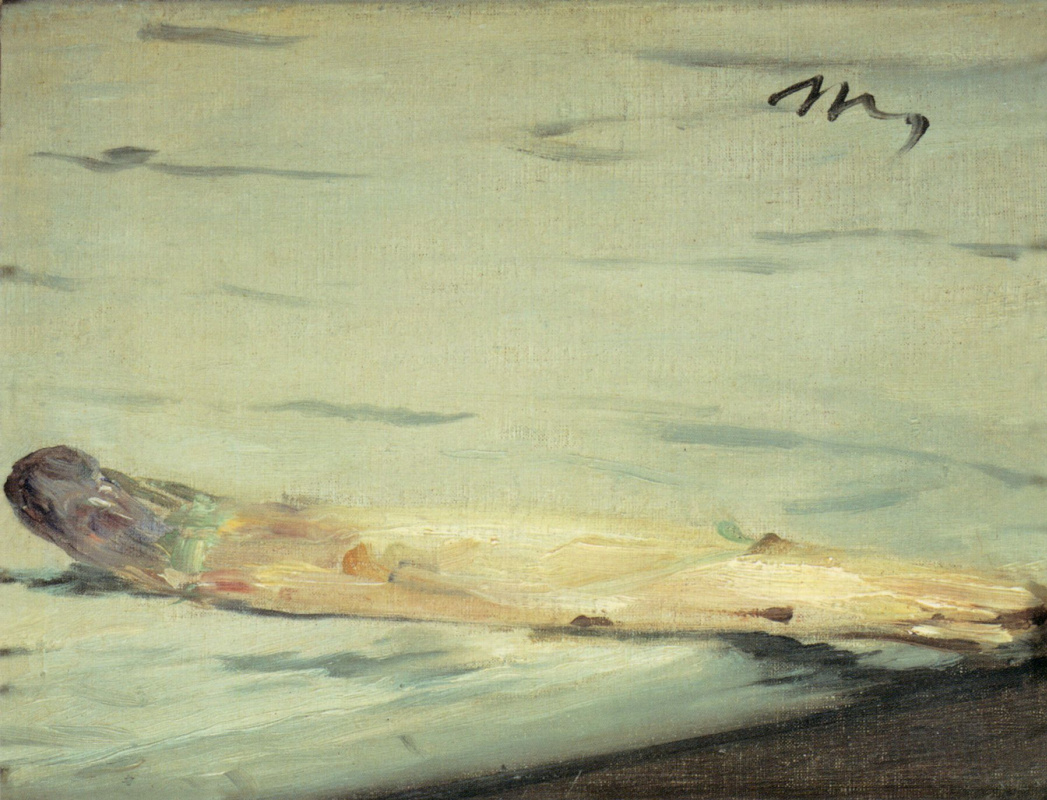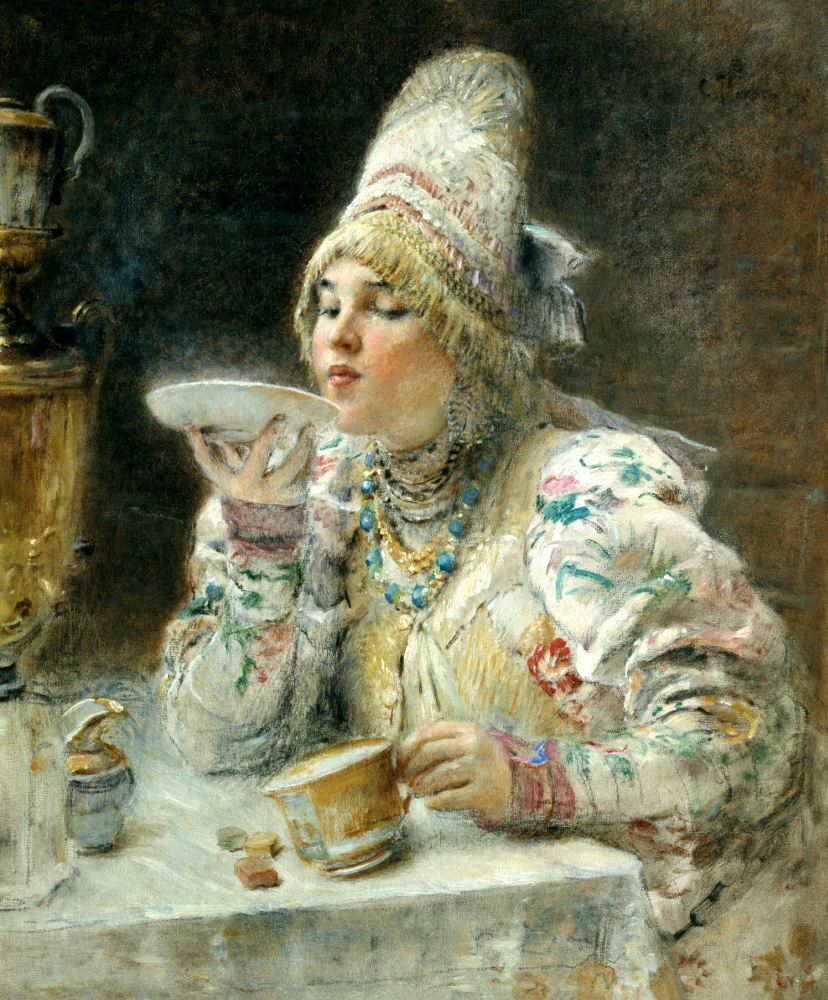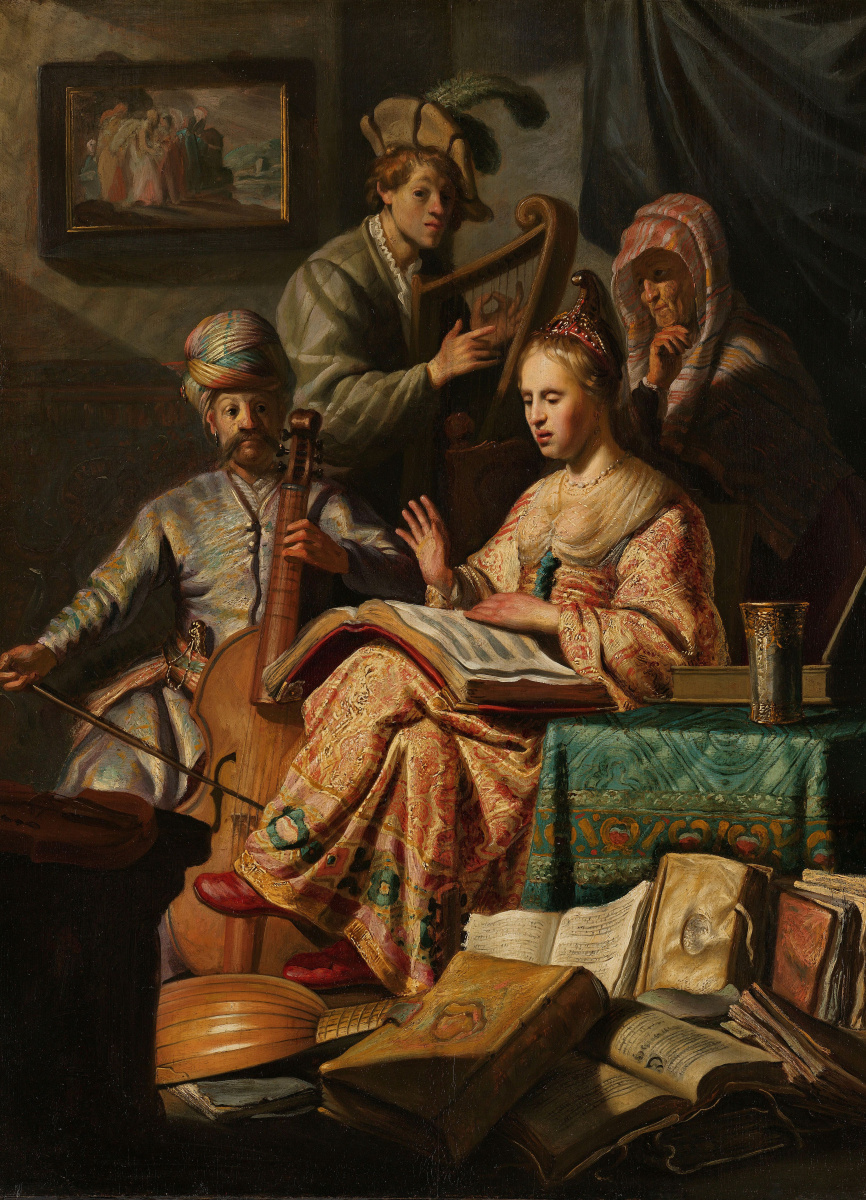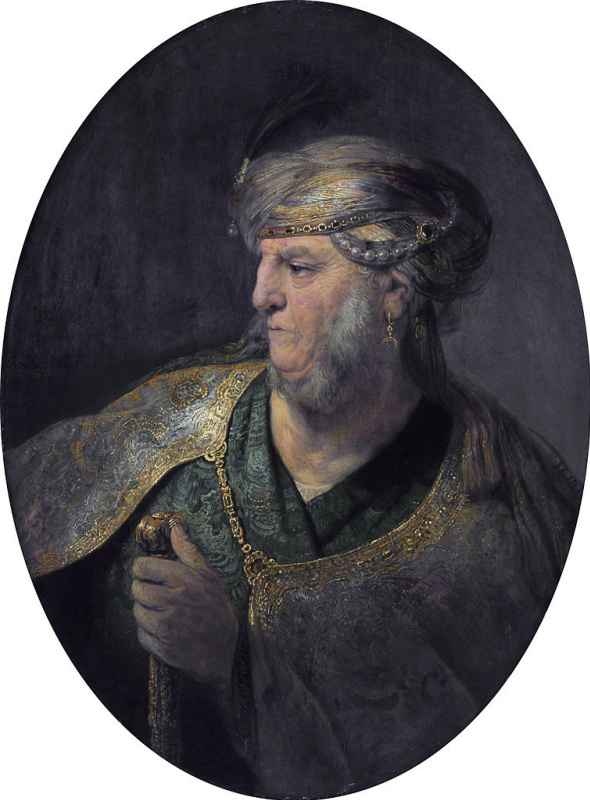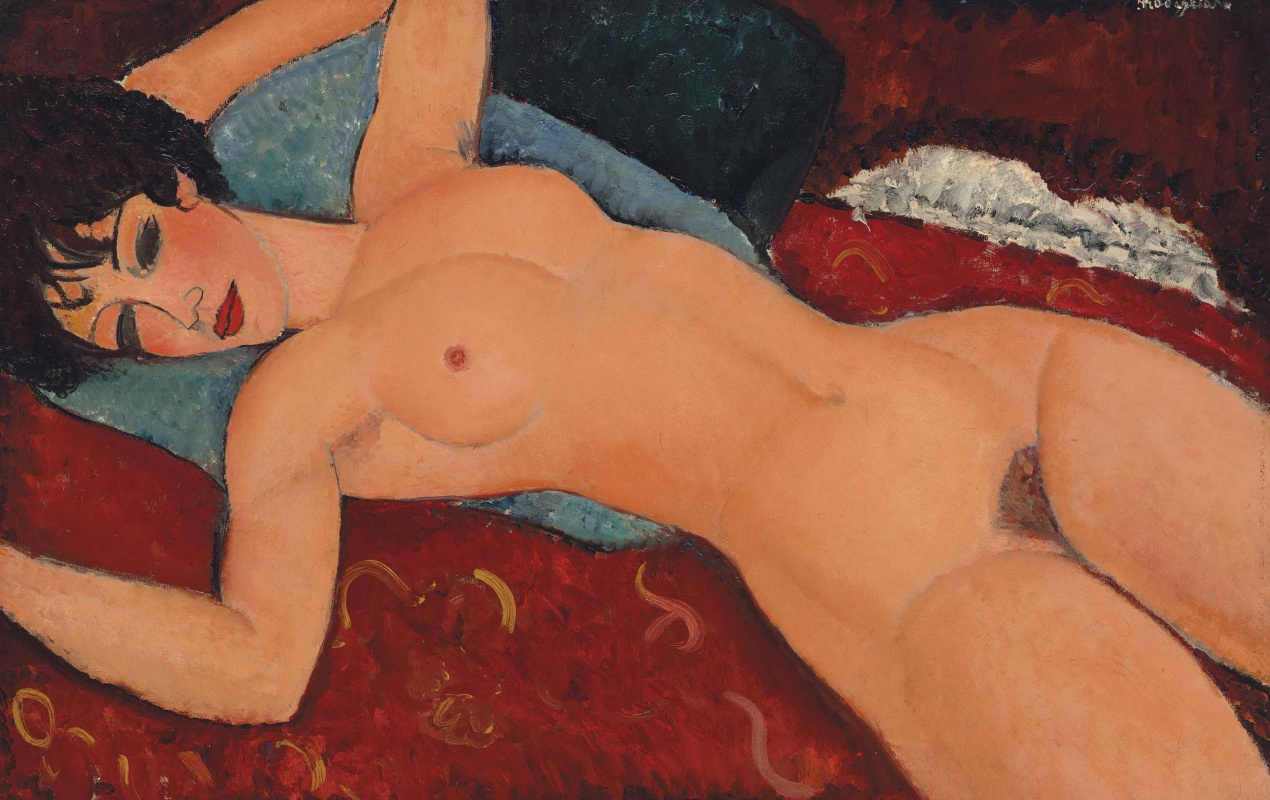
Promote your own art and bring it to the masses
Spanish master Diego Velázquez demonstrates how to become in demand on the international arena with the help of an elaborate PR stunt. Having got to Italy at the age of 50, Velázquez quickly realized that no one there could be impressed by his former merits (he used to be the court painter and intendant of the King of Spain Philip IV). The Italians, who proclaimed their homeland as God’s Abode and the cradle of art, did not really believe in the ability of foreign "barbarians" to create something worthwhile.Legend has it that Velázquez's pride was deeply hurt, and in just a few days, while in Rome, he made a beautiful portrait of a servant who accompanied him everywhere — the Moor, Juan de Pareja. As soon as the last layer of lacquer had dried on the portrait, the Moor, along with the portrait, went to the residences of the noble Romans. This idea turned out to be successful: seeing the definite similarity between the image and the model, as well as the high dignity the artist enriched the portrait of his slave with, the Italians had no choice but to recognize Velázquez's skill. Thanks to the portrait of the Moor, the artist got a commission to paint Pope Innocent X — one of the most influential people not only in Italy, but also in the whole of Europe.
By the way, the further story of Juan de Pareja himself is no less remarkable. Upon his return to Spain, Velázquez granted the Moor freedom. Spending much time in the master’s workshop and having no mean ability himself, he also became an artist, a brilliant copyist of Velázquez's works. Juan de Pareja has his own works as well: his painting The Calling of Saint Matthew is displayed at the Prado Museum, and Portrait of a Monk — at the Hermitage.
Explain the message of your picture
Do this even if you are sure that the work itself and, perhaps, its eloquent title are enough to understand your art. "Those who want to understand it don’t need any explanation" — this is one of the most unproductive techniques for selling a piece of art. Look, for example, at the accurate and detailed annotations that are used while selling paintings by well-known artists at famous auctions: it would seem that a Monet or Cézanne can be bought regardless of annotations. What is there to explain?Let the viewer understand what you were experiencing back then and what you had in mind — often such an annotation can change the attitude to work and, of course, to its creator. It doesn’t mean that you have to write poetry like Dante Gabriel Rossetti, who often came up with sonnets to accompany his pictures instead of titles. A post in social networks or a description in a catalogue would be enough.
"Mounted upon his chariot, the god has already shot a portion of his arrows; his sister Diana is flying at his heels and holding his quiver out to him. Already transfixed by the shafts of the god of warmth and life, the bloody monster writhes as it breathes forth the last remnants of its life and impotent rage in a flaming cloud. The waters of the flood are beginning to run dry, leaving the bodies of men and animals upon the mountain-tops, or sweeping them away with it. The gods are wrathful to see the earth abandoned to misshapen monsters, foul products of the primeval slime.." The artist’s friends were impressed with such a poetic description, and even a modern social media marketer would be jealous of his skill.
Give your works as gifts while you are still not very famous
In art history you can hardly find any artist who didn’t dream of selling his/her work. A sold picture not only provided an opportunity to pay for the workshop or support the family, but also helped to get much better benefits from the deal — confidence in one’s own way and status. Of course, a picture presented to a collector or a fan won’t solve the first problem, but this can easily help with the second one. Another benefit is a huge number of guests and visitors who can see the work of an unknown artist in the collector’s house.One day, Cézanne, who abandoned all hope in his search, presented the painting Bathers Resting to a complete stranger without even asking his name. The young man liked the work a great deal, and the artist was so desperate for support and approval that considered this incident a great luck. Later they got acquainted — the buyer turned out to be the composer Ernest Cabaner. Until the death of Cabaner, the picture hung above his bed. And then it was quickly bought by Gustave Caillebotte for a fair amount of money — £ 300.
There was another doctor who got a portrait from van Gogh — Dr. Felix Rey, who treated the artist at the Arles hospital after he injured his ear. However, this doctor didn’t have a very high opinion on van Gogh’s art. The portrait, too innovative and unusual for that time, made Dr. Rey’s blood turn, and he hid it in the attic. Later, the doctor’s mother used the painting to patch a hole in the chicken-coop. Fortunately, 10 years later, the painting was found by the artist Charles Camoin, and is now in the collection of the State Pushkin Museum of Fine Arts in Moscow.
Give even more works as gifts when you are famous
The given work, even the smallest and most insignificant one, may become a museum piece in the future, if it is part of an exciting story. For example, the single sprig of asparagus, painted by Édouard Manet, would not have become so famous if it had not been presented to the collector and editor of the art magazine Charles Ephrussi. Ephrussi commissioned the artist to paint a bundle of asparagus for 800 francs. On receiving the work, he liked it so much that gave Manet 1000 francs instead. Then the artist took a tiny canvas 16×21 cm in size and painted one more sprig. He sent it to Ephrussi with a note reading "There was one [sprig] missing from your bundle."
One day, a young Mexican reporter Manuel Mejido, who lived in France, decided to interview the artist, reasoning that it would get him his break as a journalist. But Picasso rarely talked to the press, so Mejido bluffed his way. He knew that the artist was a diehard opponent of the Spanish dictator Franco, and said that he represented the Spanish Republican Centre in Mexico, which had offered refuge to many Republicans during the Spanish Civil War.
Picasso was hoodwinked and granted the interview, so Mejido borrowed a new blue Citroën from his acquaintance, took a couple of friends with him and drove to Villa La Californie. For some time, they chatted with Picasso about painting and politics, and then the artist suddenly vanished and reappeared only in two hours.
In order to capture that important moment, Mejido and his friends took a number of photographs of Picasso. Unfortunately, apart from them, nothing remained of the spontaneous masterpiece. Back in Paris, Mejido paid his friend $1,000 for the car and sold it on to a French gallery for approximately $6,000, because he needed money. The car has not been seen since then.
Start your own collection of accessories for models
Attract potential customers with appropriate decor, provide the portrayed ones with unusual accessories. Use them to form your recognizable trend.Boho and hippie outfits, outlandish hats and bright scarves, rural, cowboy attributes, fantastic tiaras and Arwen-style capes, treasures from a pirate’s chest, an antiquarian shop or an alchemist’s place — find the world to your liking and set prices! The same way Konstantin Makovsky did, the successful and much-loved artist whose works were eagerly bought in Russia, Europe and America. In his day, mass fashion had already shifted away from everyday wearing of rich "boyar" clothes, sundresses and kokoshniks, although the interest in the topic was rekindling. And the artist was really into collecting old items: Makovsky began buying "beautiful antiquity" for the first money made from selling paintings. He visited antique shops almost every day, went to junk markets, stroke up acquaintances with junk dealers… The artist’s collection grew, and those unique objects appeared in his paintings and portraits. His works were recognized and commissioned.
The writer Evgeniia Fortunato, who also tried on the role of a model, recalls: "Makovsky silently took off my hat and… pulled the pins out of my hair. My hair fell over my shoulders. Having looked at me, Makovsky began to braid my hair, and I was surprised at how well he did it. After finishing braiding, he took out of a Venetian carved cabinet a magnificent blue heavy-silk sundress with semiprecious buttons and a blue headband with pearl strings. Still silently, he led me to a faceted Venetian dressing table, put the sundress on top of my dress and put the headband on my head. Without saying a word, he kept turning me round. And shifting his gaze from me to the mirror and back, narrowed his eyes.." Probably, estimating the fee: once, even the Russian tsar could not afford to buy his work.
Of course, all these valuables, which the artist found at the fairs and auctions organized in the capital to sell property of the rich who went broke, was not collecting for the sake of collecting. Pearls of rare quality, fabrics of unusual weaving, weapons of different countries and nations (from halberds to tomahawks), gilded and bronze helmets and cuirassess, busts of ancient philosophers, series of engravings, musical instruments, ancient folios — all this helped the artists a lot in his work.
According to Simon Schama, the author of the book Rembrandt’s Eyes, in Rembrandt’s private collection, "there was a place for exotic objects: Chinese and Japanese costumes, swords and helmets, strange headdresses with horns and ‘turrets', Turkish and Persian patterned fabrics with the images of thrushes, joyfully jumping in the meadows full of lilies."
Rembrandt’s younger contemporary artist Arnold Houbraken said: "Various of his pupils have told me that he sometimes sketched a face in as many as ten ways before committing the same to the panel; and spent one or two days arranging a turban to his liking."
Don't be afraid to arrange your exhibition wherever you want to, even at the risk of being taken to the police department
The first place where Vincent van Gogh exhibited his works was a restaurant and cabaret Café du Tambourin at Boulevard de Clichy in Paris. This bohemian place was owned by Agostina Segatori, the Italian who gladly posed for the artists, regularly visiting her restaurant, and got into light love affairs with them (no less gladly). Van Gogh was one of the frequent visitors to the Café du Tambourin — it was here where Henri de Toulouse-Lautrec created his pastel portrait of the artist with the glass of absinthe. For some time Van Gogh had a romantic relationship with Agostina, but besides that he also did some work of an interior decorator in the restaurant. In agreement with the owner of the place, he painted several still-lifes to decorate the walls of the Café du Tambourin, and ate for free in exchange for those paintings.In March 1887, van Gogh arranged an exhibition of Japanese prints from his own collection at the restaurant. And in July he displayed his own works there. Apart from van Gogh’s paintings, the walls of the Café du Tambourin were also decorated by the works of the artist’s friends — Paul Gauguin, Émile Bernard and Louis Anquetin. Unfortunately, the exhibition was unsuccessful for van Gogh — no one wanted to buy his work. However, it was at that exhibition, when Bernard and Anquetin sold their paintings for the first time. A couple of months later, the Café du Tambourin became bankrupt, and all of van Gogh’s works, which still remained in the restaurant, most likely were auctioned off along with the rest of the property.
Anyway, van Gogh didn’t really care where to show his paintings. On one occasion, Camille and Lucien Pissarro, who often visited the van Gogh brothers, encountered Vincent in Rue Lepic. He finished his plein-air session and was eager to show his new works to his friends, there and then. Van Gogh put his stuff right in the middle of a busy street and leant his painting against the wall. And this, apparently, was not the only such case, because at some point, van Gogh was forbidden to paint in the streets.
Members of the German artistic group Die Brücke (The Bridge) organized their first solo exhibition in the exhibition hall of the lamp factory, in the midst of fashionable chandeliers and lamps. But the police got to them too. And although the exhibition was not closed, all event posters were subject to destruction. Again, because of being "sexually suggestive."









